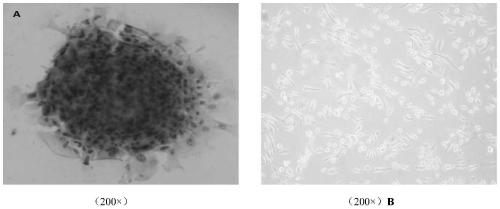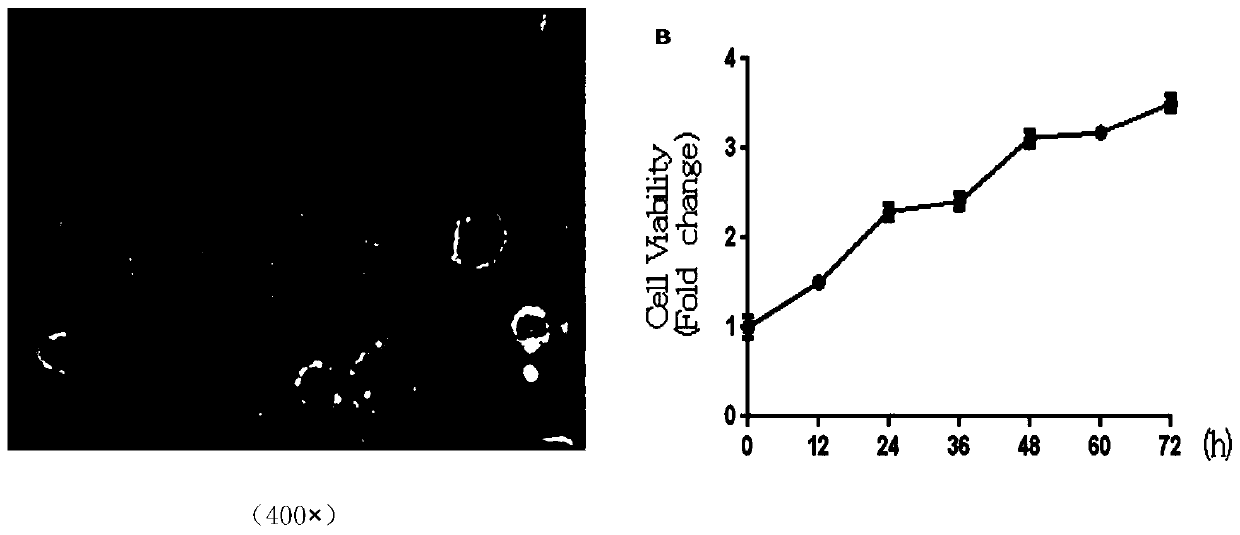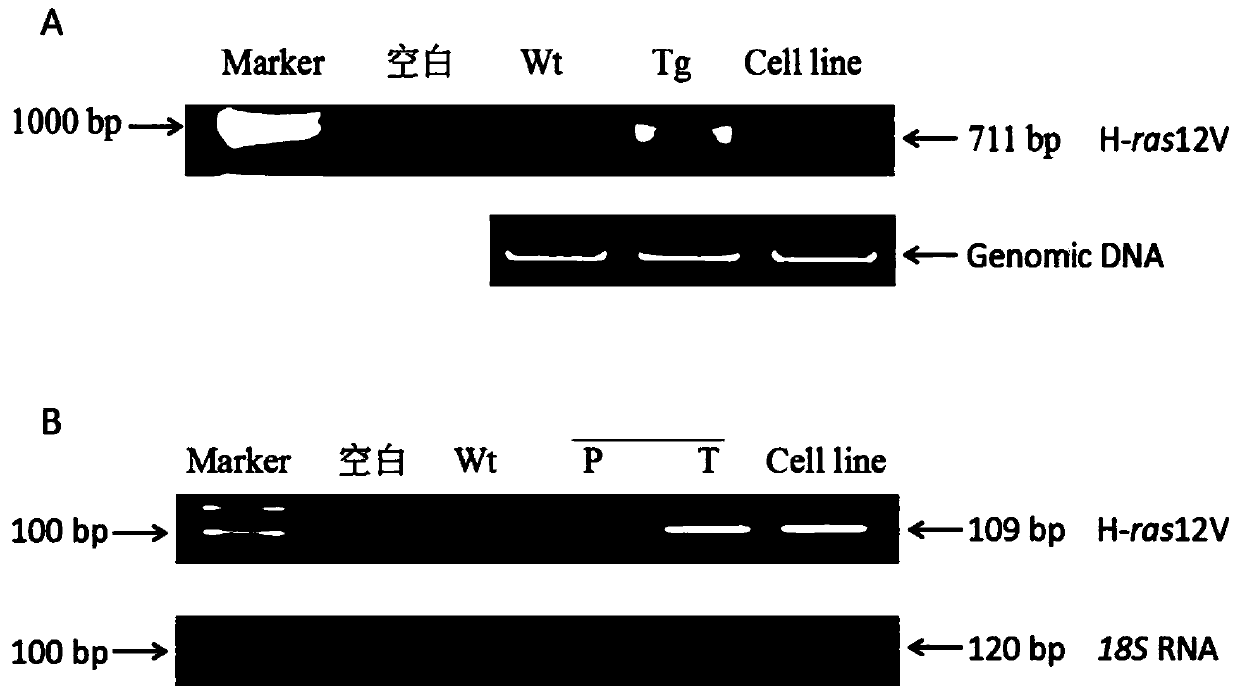Establishment and application of mmhrl3 transgenic mouse liver tumor cell line
A liver tumor and transgenic technology, applied in the fields of biology and oncology, can solve the problems of difficult establishment of mouse liver tumor cell lines, complicated influencing factors, time-consuming and labor-intensive, etc.
- Summary
- Abstract
- Description
- Claims
- Application Information
AI Technical Summary
Problems solved by technology
Method used
Image
Examples
Embodiment 1
[0061] Establishment of Liver Tumor Cell MMHRL3 in H-ras12V Transgenic Male Mice
[0062] (a) source
[0063] H-ras12V transgenic male mouse liver tumor cell line comes from H-ras12V transgenic male mice, and its specific
[0064] The information is shown in the table below.
[0065] Table 1
[0066]
[0067] The primary liver tumor tissue of the H-ras12V transgenic male mouse was obtained, and the liver tumor tissue was directly cultured in vitro.
[0068] Cultured, repeatedly digested and passaged, and finally obtained a stable and passaged H-ras12V transgenic male mouse liver tumor cell line. Specifically include the following processes:
[0069] The above-mentioned H-ras12V transgenic male mice were sacrificed painlessly, and the liver tumors were excised by aseptic technique. Place the liver tumor in a 10cm culture dish filled with sterilized normal saline at normal temperature, fully clean the tumor capsule, and use a scalpel to cut the liver tumor tissue collect...
Embodiment 2
[0073] Biological characteristics of liver tumor cell MMHRL3 in H-ras12V transgenic male mice
[0074] In this example, conventional methods were used to detect the biological characteristics of the purebred H-ras12V transgenic male mouse liver tumor cell MMHRL3 with the preservation number CCTCC NO: C2016192, and the results are as follows:
[0075] 2.1 Cell morphology
[0076] Observing H-ras12V transgenic male mouse liver tumor cells MMHRL3 under an ordinary optical microscope, it can be seen that most of the liver tumor cells are round or polygonal, and the cell shape is uniform ( figure 2 A). Cell Counting Kit-8 (CCK8 kit) was used to detect the proliferation state of the cell line, and the operation was carried out in full accordance with the operation guide of the kit ( figure 2 B). The cells proliferated stably.
[0077] 2.2 Genotype identification of H-ras12V transgene
[0078] Take the H-ras12V transgenic male mouse liver tumor cell MMHR L3 (preservation numbe...
Embodiment 3
[0091] Establishment of liver tumor animal model using H-ras12V transgenic male mouse liver tumor cell MMHR1
[0092] The H-ra s1 2V transgenic male mouse liver tumor cell MMHR L3 (preservation number: C2016192) obtained in Example 1 was digested with digestive solution (0.25% trypsin, 0.02% EDTA, pH7.3), collected and count, according to 2 x 10 6 or 1×10 8 The number of cells / mouse was inoculated into the subcutaneous parts of the left and right axilla of the mice, and the inoculated mice were 5 4-week-old nude mice.
[0093] Between 15 and 40 days after inoculation, tumors occurred successively in 5 mice. The same method as in Example 2 was used for biological detection, and it was confirmed that hepatocellular liver tumors were induced in animal models.
[0094] Cell line deposit
[0095] The H-ras12V transgenic male mouse liver tumor cell MMHRL3 of the present invention was deposited in the China Center for Type Culture Collection (Wuhan, China) on November 08, 2016, a...
PUM
 Login to View More
Login to View More Abstract
Description
Claims
Application Information
 Login to View More
Login to View More - R&D
- Intellectual Property
- Life Sciences
- Materials
- Tech Scout
- Unparalleled Data Quality
- Higher Quality Content
- 60% Fewer Hallucinations
Browse by: Latest US Patents, China's latest patents, Technical Efficacy Thesaurus, Application Domain, Technology Topic, Popular Technical Reports.
© 2025 PatSnap. All rights reserved.Legal|Privacy policy|Modern Slavery Act Transparency Statement|Sitemap|About US| Contact US: help@patsnap.com



